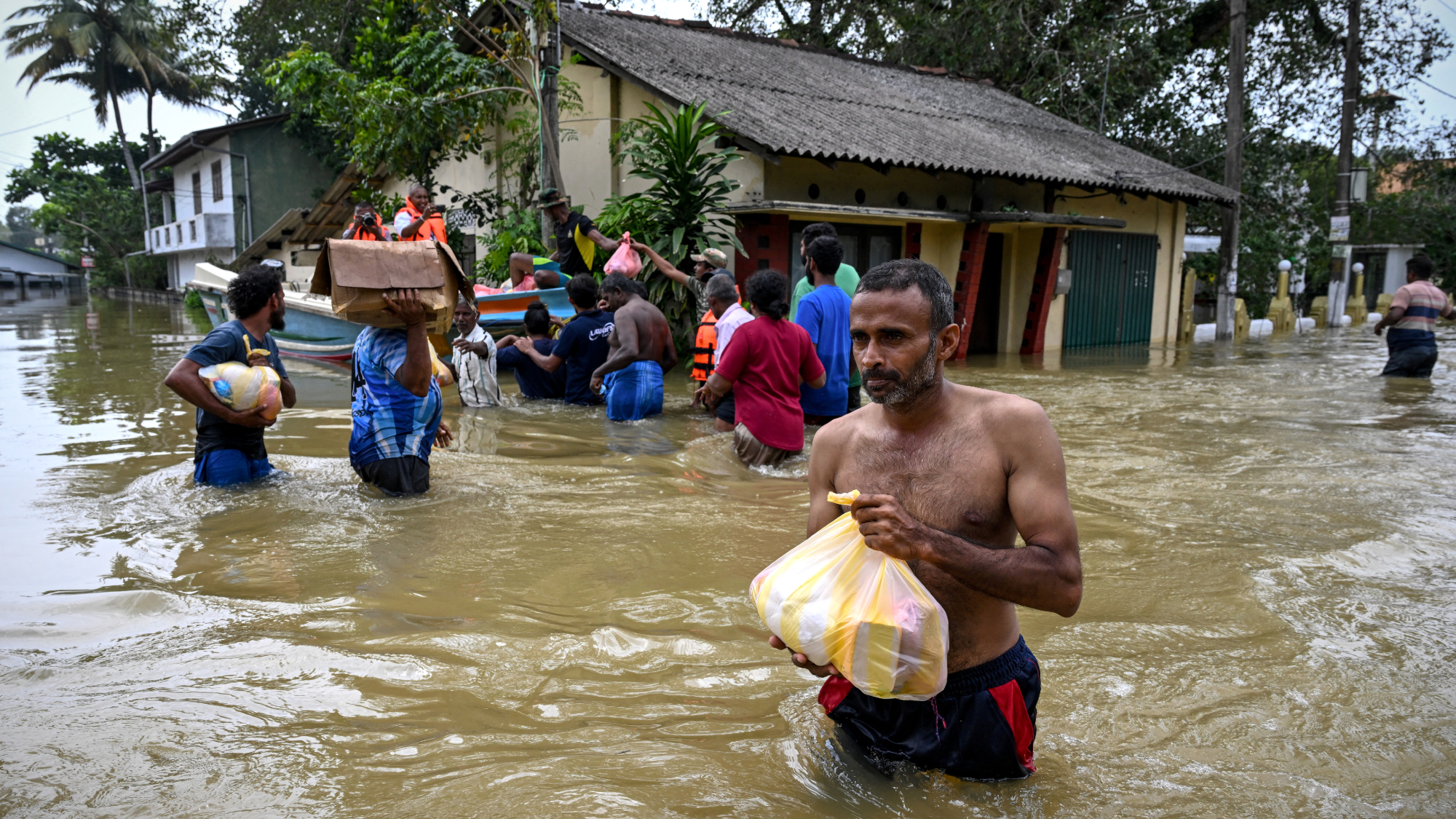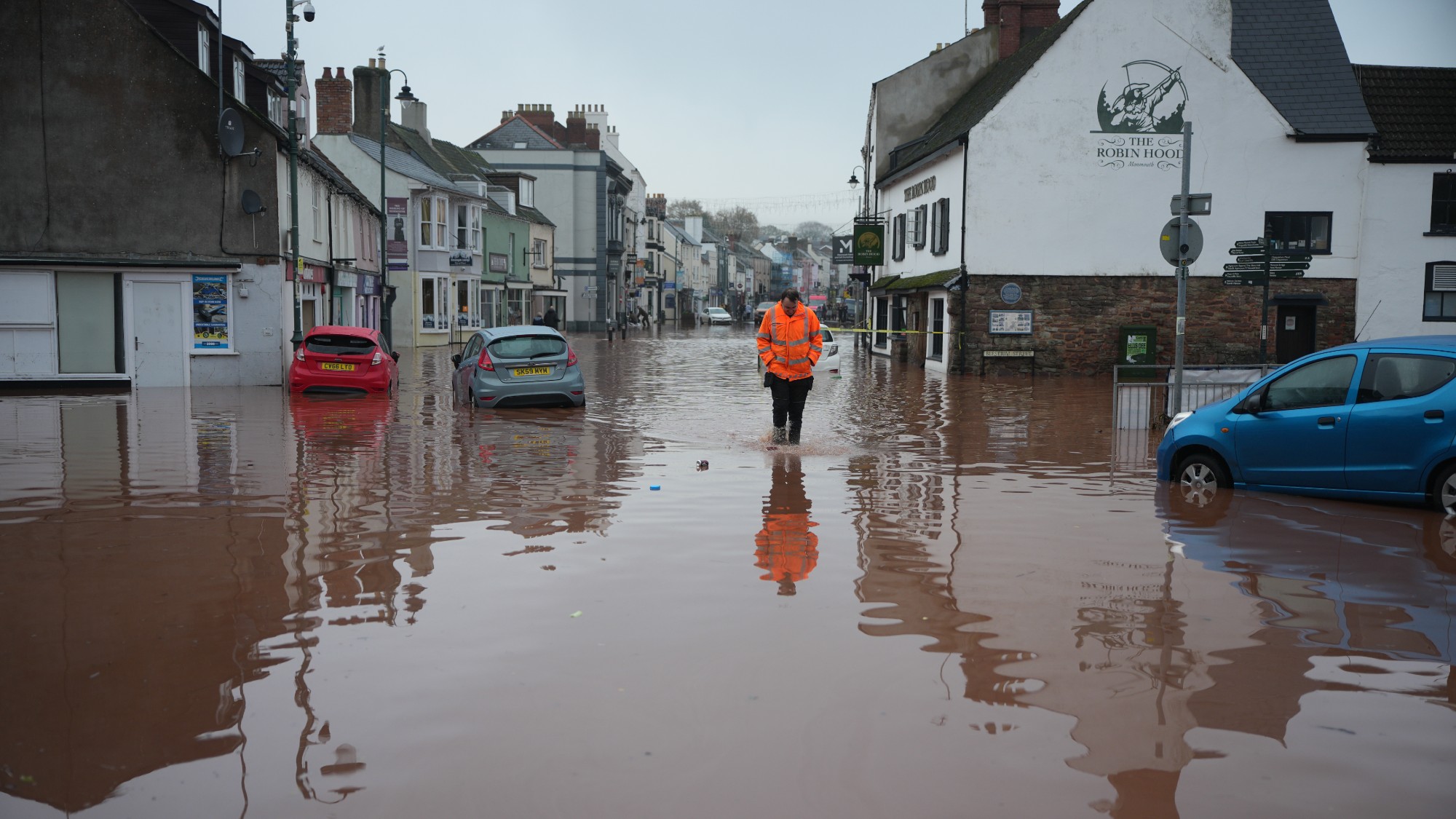Colombo's wetlands: how the 'lungs' of Sri Lanka's capital are being restored
The revival of the critical ecosystems could provide 'valuable lessons' for the world

The wetlands of Colombo – described by one expert as "the lungs and kidneys" of Sri Lanka's capital but long since neglected and polluted – are being restored, helping to manage floods and boost biodiversity.
Once "used as trash dumps", the wetlands have been "remade as flood-buffering parks", said the Bulletin of the Atomic Scientists, but despite recent progress, the ecosystems continue to face threats from urban development.
Troubled history
Sri Lanka's ancient kingdoms "thrived in a well-managed wetland system", where the marshes were used for transport and to grow food, said the BBC. But in the British colonial period from the late 18th century, the wetlands were drained to build housing and businesses.
The Week
Escape your echo chamber. Get the facts behind the news, plus analysis from multiple perspectives.

Sign up for The Week's Free Newsletters
From our morning news briefing to a weekly Good News Newsletter, get the best of The Week delivered directly to your inbox.
From our morning news briefing to a weekly Good News Newsletter, get the best of The Week delivered directly to your inbox.
The situation deteriorated further in the decades following independence in 1948. Some wetlands were claimed for housing and used to dump "everything from food waste to solid waste", chemicals and sewage.
It was only after a series of calamitous floods in 2010, which affected nearly 700,000 people and submerged the country's parliament, that government policy began to shift.
Colombo is located in a river basin, so the city is "naturally prone to floods", but wetlands "act as a flood buffer", with 40% of floodwater draining into wetland areas. These are not their only benefits: they also "sink carbon, purify the air and control temperatures".
A cautionary tale
In 2016, the government introduced a new management strategy for the ecosystems, which sets out to include wetlands in urban planning, prevent further wetland loss, restore the areas and inspire communities to play a part in their conservation.
A free daily email with the biggest news stories of the day – and the best features from TheWeek.com
Colombo now has four wetland parks and a number of other recreational spaces linked by wetlands. So although the city's recent history is a "cautionary tale" of what can happen when authorities are "prioritising urban growth" over "life-saving natural resources", the wetlands "could soon become the area's greatest strength".
Flooding in Sri Lanka is "getting worse", said the Bulletin, and climate change, coastal erosion and urbanisation are "magnifying the impact of floods". If Colombo can "harness" its nearly 5,000 acres of wetlands to "limit destruction wrought by floods", the city's victory would "provide valuable lessons for cities around the world".
For now, the sight of "couples taking daily sunset walks through mangrove forests and schoolchildren's delighted shrieks when a monitor lizard pulls itself out of the water are a sign" that wetlands are becoming "a fixture of Colombo's psyche".
Chas Newkey-Burden has been part of The Week Digital team for more than a decade and a journalist for 25 years, starting out on the irreverent football weekly 90 Minutes, before moving to lifestyle magazines Loaded and Attitude. He was a columnist for The Big Issue and landed a world exclusive with David Beckham that became the weekly magazine’s bestselling issue. He now writes regularly for The Guardian, The Telegraph, The Independent, Metro, FourFourTwo and the i new site. He is also the author of a number of non-fiction books.
-
 Political cartoons for January 4
Political cartoons for January 4Cartoons Sunday's political cartoons include a resolution to learn a new language, and new names in Hades and on battleships
-
 The ultimate films of 2025 by genre
The ultimate films of 2025 by genreThe Week Recommends From comedies to thrillers, documentaries to animations, 2025 featured some unforgettable film moments
-
 Political cartoons for January 3
Political cartoons for January 3Cartoons Saturday's political cartoons include citizen journalists, self-reflective AI, and Donald Trump's transparency
-
 Environment breakthroughs of 2025
Environment breakthroughs of 2025In Depth Progress was made this year on carbon dioxide tracking, food waste upcycling, sodium batteries, microplastic monitoring and green concrete
-
 Crest falling: Mount Rainier and 4 other mountains are losing height
Crest falling: Mount Rainier and 4 other mountains are losing heightUnder the radar Its peak elevation is approximately 20 feet lower than it once was
-
 Death toll from Southeast Asia storms tops 1,000
Death toll from Southeast Asia storms tops 1,000speed read Catastrophic floods and landslides have struck Sri Lanka, Indonesia, Thailand and Malaysia
-
 Can for-profit geoengineering put a pause on climate change?
Can for-profit geoengineering put a pause on climate change?In the Spotlight Stardust Solutions wants to dim the sun. Scientists are worried.
-
 How will climate change affect the UK?
How will climate change affect the UK?The Explainer Met Office projections show the UK getting substantially warmer and wetter – with more extreme weather events
-
 Can the UK do more on climate change?
Can the UK do more on climate change?Today's Big Question Labour has shown leadership in the face of fraying international consensus, but must show the public their green mission is ‘a net benefit, not a net cost’
-
 Did Cop30 fulfil its promise to Indigenous Brazilians?
Did Cop30 fulfil its promise to Indigenous Brazilians?Today’s Big Question Brazilian president approves 10 new protected territories, following ‘unprecedented’ Indigenous presence at conference, both as delegates and protesters
-
 Can the world adapt to climate change?
Can the world adapt to climate change?Today's Big Question As the world gets hotter, COP30 leaders consider resilience efforts